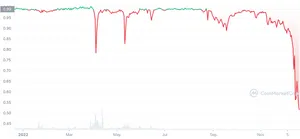It's finally happened. The siren song of NFT grifting proved too much for Donald Trump.Trump supporters got all excited when Trump posted on social media to tease a "major announcement". Was he going to run for speaker of the House? Return to Twitter? Unveil a presidential running mate?
His supporters were surprised — and not exactly thrilled — when the announcement turned out to be a collection of 45,000 NFTs (sorry, "digital trading cards") featuring artwork of himself in heroic outfits and poses. The NFTs are "just" $99 apiece, and money goes to Trump, not his campaign.
Even some of his strongest supporters were nonplussed. Steve Bannon said, "I can't do this anymore," and opined that he should fire whoever advised him to make the collection. A source working for Trump said that he is "supposed to be running for president right now", and questioned how "fleecing our supporters for $99" was in service of that goal.
Nevertheless, the NFTs seemed to sell decently well, with more than 30,000 minted by that evening.









